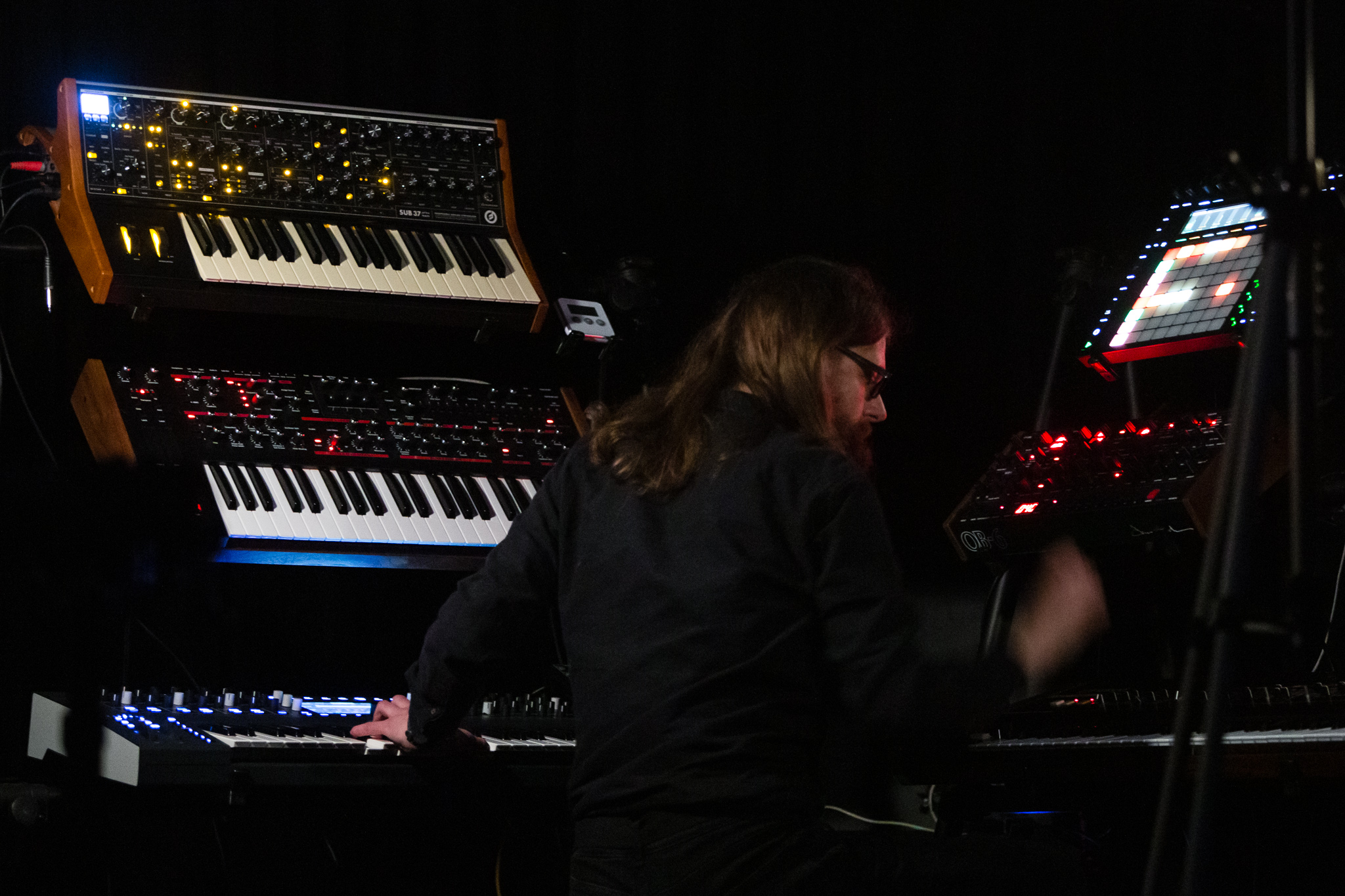
Martin Stürtzer
Martin Stürtzer is an Ambient / Electronic / Dub Techno artist from Wuppertal (Germany). He works with analog, digital, hardware and virtual instruments to create Ambient, Electronic and Dub Techno music.
We are proud to say that Martin is a fan of our synthesizers since the late 90s. He basically grew up with playing our instruments and we are happy to have him as our first official Waldorf Artist.
In an exclusive interview with us, Martin shares his inspiration and tells us why he is so excited about our products.
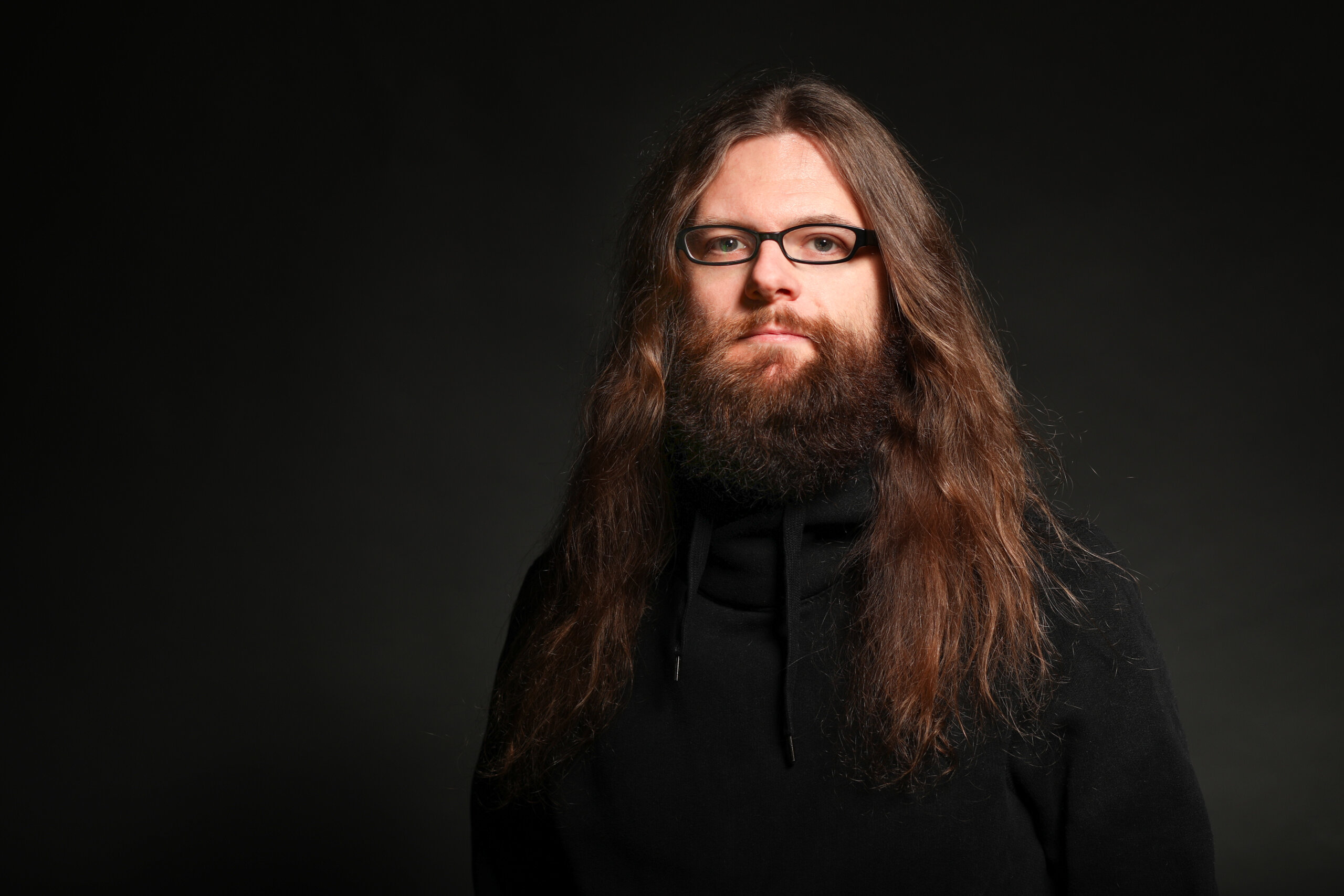
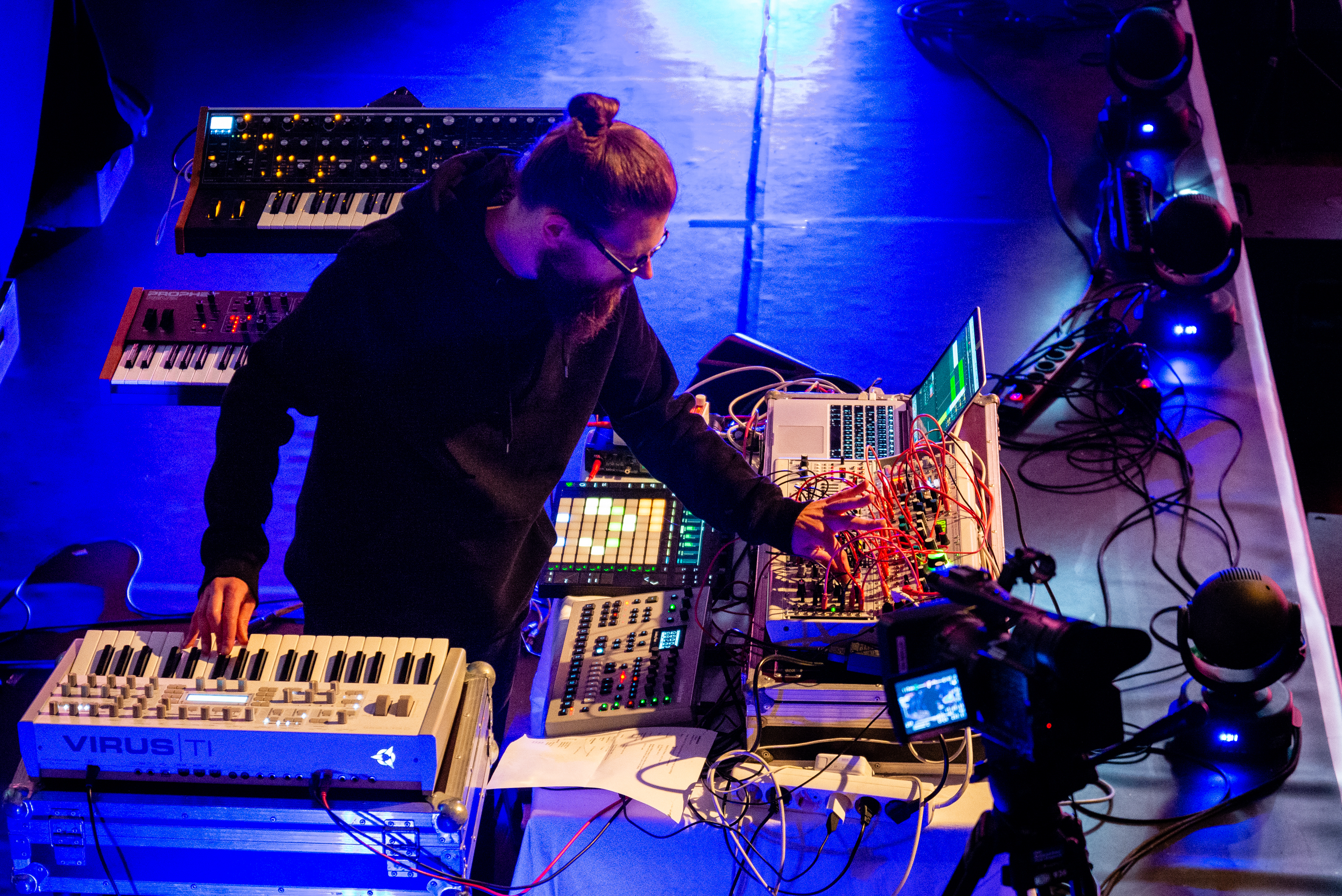
How did you start making music?
How did you start making music?
I was fortunate to grow up in a musical family. My parents taught and practiced at home, so it was natural for me to make music too. I discovered my love for the piano at a young age. When I was 11, my stepfather moved in with us, bringing a synthesizer studio with him. The Waldorf Microwave 1 and the Oberheim Matrix fascinated me at the time and are now part of my setup. Classical music and electronic music were equally important to me, with my socialization heavily influenced by the techno broadcasts on radio and television at the time.
What was your first synth?
What was your first synth?
The answer is really terrible: a Yamaha CS1X. Combined with an Atari computer, I really squeezed every last bit out of it and learned a lot. I was only 12 at the time and didn’t have an overview yet. Devices like the Virus and Nord Lead didn’t exist yet, and what is now called the vintage market didn’t open up to me yet. My first “real” synthesizer was the Virus A, which I later replaced with the Virus TI.
What do you do first…
What do you do first…
when you stand in front of a new synth?
I look for a way to generate an init patch and start exploring the individual elements of the synthesizer. What can the oscillators do? How does the filter sound? What modulation options do I have? I quickly realize whether I can find a musical approach to the instrument and what its peculiarities are. Nowadays, a good user interface and easy accessibility are important to me. Ideally, I look up Midi CCs in the manual, and the rest should be self-explanatory from the control surface. Preset browsing is not my thing, and if there is a way to completely clear the patch memory, I like to use it.
What inspires your music?
What inspires your music?
As you can easily see from the titles and artworks of my music, I am inspired by sci-fi stories and the themes of space travel and astronomy in general. Ideas also come when I hear music from others that I like. But distance from music can also be inspiring; sometimes musical structures come to me while I’m cycling or hiking.
What is your favorite piece of gear…
What is your favorite piece of gear…
in your studio that is not a synth that you can’t do without?
in your studio that is not a synth that you can’t do without?
By now, the sum of all devices has become a large toolbox that I don’t want to do without. When I make music, I usually have an idea in my head that I have to implement. Usually, one device is particularly suitable for quickly reaching the goal. My studio is like a big pipe-organ for me, where I can use different registers to represent different timbres. When a more complex sound design is required, I like to use one of my two Iridiums. I prefer to do classical synthesizer sounds with the Prophet or one of my Moogs.
Presets or tweaking yourself?
Presets or tweaking yourself?
Definitely tweaking myself! Only then can I really get to know a synthesizer and adjust a sound to fit the musical context I need. Mixing and mastering are relatively quick for me because I occupy certain frequency ranges when creating the sounds, so that a (hopefully) coherent overall picture can emerge. Presets are an interesting insight for me to discover the possibilities of a synthesizer and come up with ideas. For example, I found Anthony Rother’s idea in his soundset for the Iridium and Quantum to be very clever, combining different sinus oscillators with ring modulators and overdrive.
What is your production process:
What is your production process:
in-the-box or played live?
in-the-box or played live?
In recent years, I have produced a lot of music, with a significant portion of it being created live during my home concerts or in preparation for them. Since March 2020, I have been playing a one-hour online concert every first Sunday of the month with music that I prepare specifically for that event. Improvisation and spontaneity are important elements of my work, to which I consciously give a lot of space. I prepare sounds that match each other and a few sequences, but the flow of the music and anything else that spontaneously comes to mind are open. Sometimes, the result of these sessions is already “finished”, and other times, I record the ideas cleanly afterwards. I make classic productions that set everything from beginning to end on the timeline less frequently.
At which time of day or night…
At which time of day or night…
would we meet you most often in your studio?
would we meet you most often in your studio?
I like to get up early, and my ideal day starts at the piano. I usually enter the studio in the afternoon and evening. I am not a classic night owl; eventually, I get tired and loose concentration and would rather sleep. I prefer shorter and concentrated work phases with a clear objective.
How does your live set-up look like?
How does your live set-up look like?
When planning a performance, I decide at the beginning on a selection of synthesizers that I want to bring. I need to have everything under control live and not get lost in too many tracks. Devices with patch memory are much more popular here than those without so that I can prepare everything for the different pieces. The central part of my setup is Ableton Live with an audio and MIDI interface. I do not use a mixer; instead, all audio sources run directly into the computer and are processed there. I also use classic MIDI cabling via DIN to minimize the load on the computer. I use the Push 2 for control and also a Faderfox EC4 or alternatively, the Midi Fighter Twister.
Which role do Waldorf synths play in your music?
Which role do Waldorf synths play in your music?
Waldorf devices have always been a part of my setup, and I think I have had almost every device in the studio over the years. The Iridium is undoubtedly my favorite Waldorf synth, and I have used it in almost every production in recent years. The user interface is particularly well done because it displays all changes to parameters graphically, and despite the tremendous complexity, you almost never get lost in parameter graves. Of course, other instruments also master individual synthesis forms, but I particularly like the interaction of the different models. When the Iridium Keys was introduced, I actually wanted to sell the desktop version, but now I use both simultaneously. The keyboard really sets standards and gives the instrument a special musical quality through its polyphonic aftertouch.
As a beta tester, I contributed a small part to the development of the M and was able to observe the implementation of my own idea into the production model in one case. Therefore, I have a special relationship with this synthesizer.
On what projects are you currently working on?
I am currently preparing for the upcoming home concert, which always airs live on my YouTube channel every first Sunday of the month. In the aftermath of these sets, I am currently putting together an album that I would like to release on double vinyl. I also have a few live performances scheduled, such as the E-Day in Eindhoven and another planetarium concert that I will announce soon.
After two and a half years of playing (mostly) at home due to the pandemic, it was a pleasure for Martin to bring his synthesizers on stage at the Superbooth 2022 in Berlin. This liveset was built around Ableton Live as midi sequencer and audio mixer. All sounds are from the Waldorf Iridium, Waldorf M, Oberheim Xpander, Moog Sub37 and Eurorack Modular.
This is the live recording of Martins sold-out show that he played at Planetarium Bochum on December 30th, 2022.
The music was performed on Moog Sub37, Waldorf Iridium Keys, Dave Smith Instruments Pro-2, Oberheim OB-6 & Roland Juno-60. Mixing, effects and midi sequencing by Ableton Live 11. Tracks 1 – 3 are unreleased. Track 4 was released on his album „Microgravity“. Track 5 was released on his album „Relativity“.
Follow Martin:
Martin Stürtzer
Martin Stürtzer is an Ambient / Electronic / Dub Techno artist from Wuppertal (Germany). He works with analog, digital, hardware and virtual instruments to create Ambient, Electronic and Dub Techno music.
We are proud to say that Martin is a fan of our synthesizers since the late 90s. He basically grew up with playing our instruments and we are happy to have him as our first official Waldorf Artist.

In an exclusive interview with us, Martin shares his inspiration and tells us why he is so excited about our products.

How did you start making music?
How did you start making music?
I was fortunate to grow up in a musical family. My parents taught and practiced at home, so it was natural for me to make music too. I discovered my love for the piano at a young age. When I was 11, my stepfather moved in with us, bringing a synthesizer studio with him. The Waldorf Microwave 1 and the Oberheim Matrix fascinated me at the time and are now part of my setup. Classical music and electronic music were equally important to me, with my socialization heavily influenced by the techno broadcasts on radio and television at the time.

What was your first synth?
What was your first synth?
The answer is really terrible: a Yamaha CS1X. Combined with an Atari computer, I really squeezed every last bit out of it and learned a lot. I was only 12 at the time and didn’t have an overview yet. Devices like the Virus and Nord Lead didn’t exist yet, and what is now called the vintage market didn’t open up to me yet. My first “real” synthesizer was the Virus A, which I later replaced with the Virus TI.
What do you do first…
What do you do first…
when you stand in front of a new synth?
when you stand in front of a new synth?
I look for a way to generate an init patch and start exploring the individual elements of the synthesizer. What can the oscillators do? How does the filter sound? What modulation options do I have? I quickly realize whether I can find a musical approach to the instrument and what its peculiarities are. Nowadays, a good user interface and easy accessibility are important to me. Ideally, I look up Midi CCs in the manual, and the rest should be self-explanatory from the control surface. Preset browsing is not my thing, and if there is a way to completely clear the patch memory, I like to use it.
What inspires your music?
What inspires your music?
As you can easily see from the titles and artworks of my music, I am inspired by sci-fi stories and the themes of space travel and astronomy in general. Ideas also come when I hear music from others that I like. But distance from music can also be inspiring; sometimes musical structures come to me while I’m cycling or hiking.
What is your favorite piece of gear…
What is your favorite piece of gear…
in your studio that is not a synth that you can’t do without?
in your studio that is not a synth that you can’t do without?
By now, the sum of all devices has become a large toolbox that I don’t want to do without. When I make music, I usually have an idea in my head that I have to implement. Usually, one device is particularly suitable for quickly reaching the goal. My studio is like a big pipe-organ for me, where I can use different registers to represent different timbres. When a more complex sound design is required, I like to use one of my two Iridiums. I prefer to do classical synthesizer sounds with the Prophet or one of my Moogs.
Presets or tweaking yourself?
Presets or tweaking yourself?
Definitely tweaking myself! Only then can I really get to know a synthesizer and adjust a sound to fit the musical context I need. Mixing and mastering are relatively quick for me because I occupy certain frequency ranges when creating the sounds, so that a (hopefully) coherent overall picture can emerge. Presets are an interesting insight for me to discover the possibilities of a synthesizer and come up with ideas. For example, I found Anthony Rother’s idea in his soundset for the Iridium and Quantum to be very clever, combining different sinus oscillators with ring modulators and overdrive.
What is your production process:
What is your production process:
in-the-box or played live?
in-the-box or played live?
In recent years, I have produced a lot of music, with a significant portion of it being created live during my home concerts or in preparation for them. Since March 2020, I have been playing a one-hour online concert every first Sunday of the month with music that I prepare specifically for that event. Improvisation and spontaneity are important elements of my work, to which I consciously give a lot of space. I prepare sounds that match each other and a few sequences, but the flow of the music and anything else that spontaneously comes to mind are open. Sometimes, the result of these sessions is already “finished”, and other times, I record the ideas cleanly afterwards. I make classic productions that set everything from beginning to end on the timeline less frequently.
At which time of day or night…
At which time of day or night…
would we meet you most often in your studio?
would we meet you most often in your studio?
I like to get up early, and my ideal day starts at the piano. I usually enter the studio in the afternoon and evening. I am not a classic night owl; eventually, I get tired and loose concentration and would rather sleep. I prefer shorter and concentrated work phases with a clear objective.
How does your live
set-up look like?
How does your live
set-up look like?
When planning a performance, I decide at the beginning on a selection of synthesizers that I want to bring. I need to have everything under control live and not get lost in too many tracks. Devices with patch memory are much more popular here than those without so that I can prepare everything for the different pieces. The central part of my setup is Ableton Live with an audio and MIDI interface. I do not use a mixer; instead, all audio sources run directly into the computer and are processed there. I also use classic MIDI cabling via DIN to minimize the load on the computer. I use the Push 2 for control and also a Faderfox EC4 or alternatively, the Midi Fighter Twister.
Which role do Waldorf synths play in your music?
Which role do Waldorf synths play in your music?
Waldorf devices have always been a part of my setup, and I think I have had almost every device in the studio over the years. The Iridium is undoubtedly my favorite Waldorf synth, and I have used it in almost every production in recent years. The user interface is particularly well done because it displays all changes to parameters graphically, and despite the tremendous complexity, you almost never get lost in parameter graves. Of course, other instruments also master individual synthesis forms, but I particularly like the interaction of the different models. When the Iridium Keys was introduced, I actually wanted to sell the desktop version, but now I use both simultaneously. The keyboard really sets standards and gives the instrument a special musical quality through its polyphonic aftertouch.
As a beta tester, I contributed a small part to the development of the M and was able to observe the implementation of my own idea into the production model in one case. Therefore, I have a special relationship with this synthesizer.
On what projects are you currently working on?
I am currently preparing for the upcoming home concert, which always airs live on my YouTube channel every first Sunday of the month. In the aftermath of these sets, I am currently putting together an album that I would like to release on double vinyl. I also have a few live performances scheduled, such as the E-Day in Eindhoven and another planetarium concert that I will announce soon.
After two and a half years of playing (mostly) at home due to the pandemic, it was a pleasure for Martin to bring his synthesizers on stage at the Superbooth 2022 in Berlin. This liveset was built around Ableton Live as midi sequencer and audio mixer. All sounds are from the Waldorf Iridium, Waldorf M, Oberheim Xpander, Moog Sub37 and Eurorack Modular.
This is the live recording of Martins sold-out show that he played at Planetarium Bochum on December 30th, 2022.
The music was performed on Moog Sub37, Waldorf Iridium Keys, Dave Smith Instruments Pro-2, Oberheim OB-6 & Roland Juno-60. Mixing, effects and midi sequencing by Ableton Live 11. Tracks 1 – 3 are unreleased. Track 4 was released on his album „Microgravity“. Track 5 was released on his album „Relativity“.
Follow Martin:
Martin Stürtzer
Martin Stürtzer is an Ambient / Electronic / Dub Techno artist from Wuppertal (Germany). He works with analog, digital, hardware and virtual instruments to create Ambient, Electronic and Dub Techno music.
We are proud to say that Martin is a fan of our synthesizers since the late 90s. He basically grew up with playing our instruments and we are happy to have him as our first official Waldorf Artist.
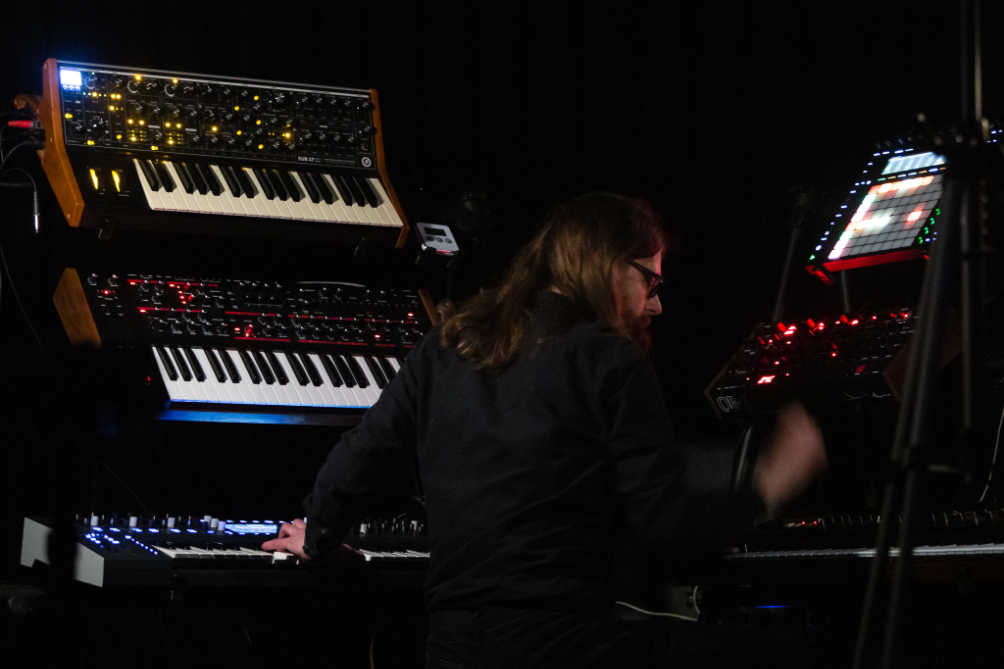
In an exclusive interview with us, Martin shares his inspiration and tells us why he is so excited about our products.
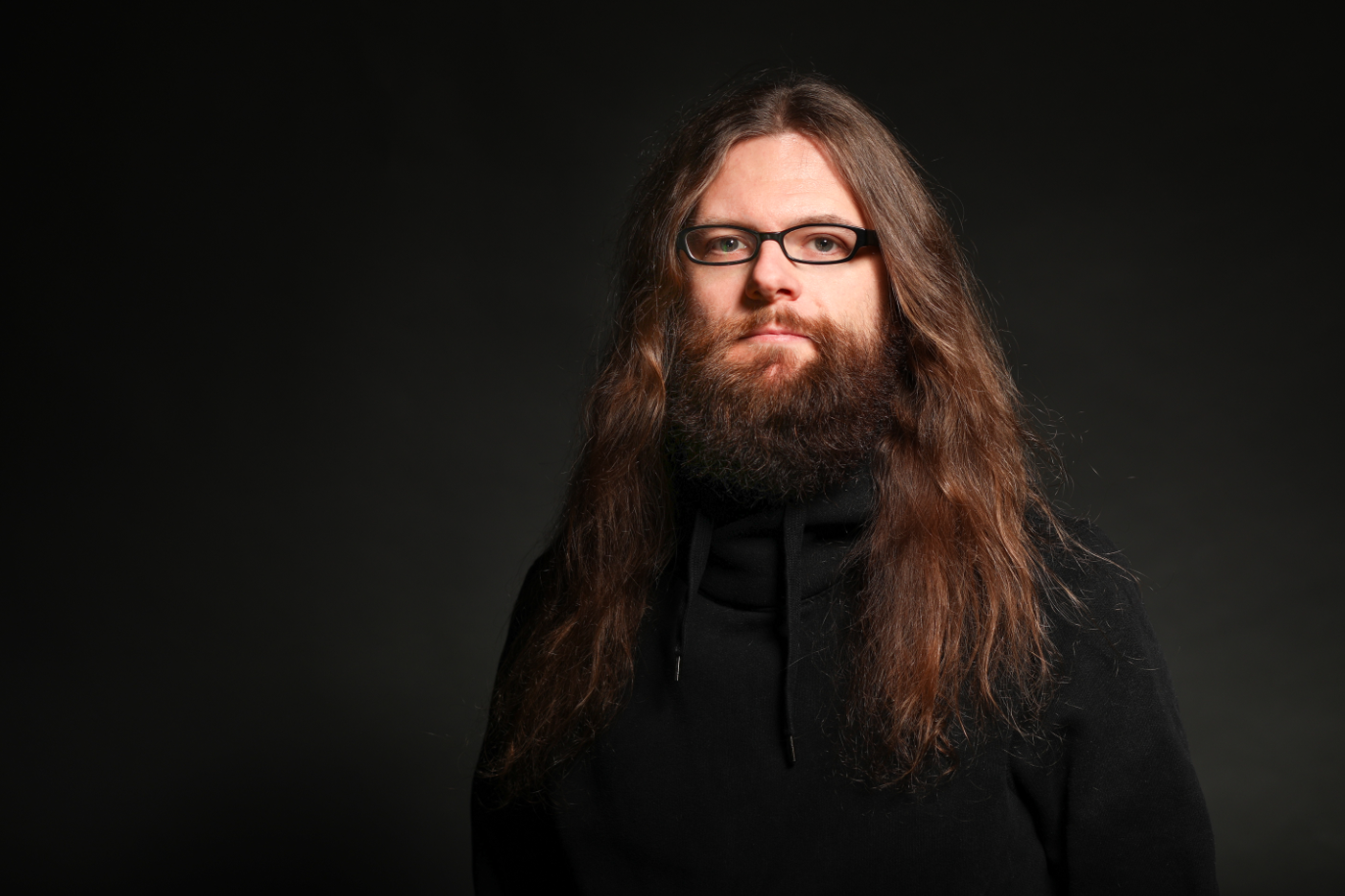
How did you start making music?
How did you start making music?
I was fortunate to grow up in a musical family. My parents taught and practiced at home, so it was natural for me to make music too. I discovered my love for the piano at a young age. When I was 11, my stepfather moved in with us, bringing a synthesizer studio with him. The Waldorf Microwave 1 and the Oberheim Matrix fascinated me at the time and are now part of my setup. Classical music and electronic music were equally important to me, with my socialization heavily influenced by the techno broadcasts on radio and television at the time.
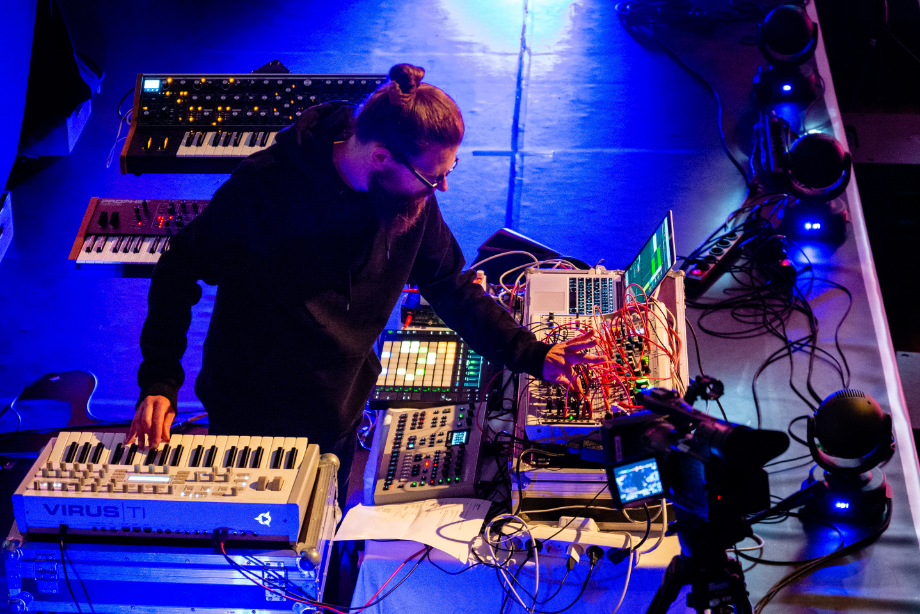
What was your first synth?
What was your first synth?
The answer is really terrible: a Yamaha CS1X. Combined with an Atari computer, I really squeezed every last bit out of it and learned a lot. I was only 12 at the time and didn’t have an overview yet. Devices like the Virus and Nord Lead didn’t exist yet, and what is now called the vintage market didn’t open up to me yet. My first “real” synthesizer was the Virus A, which I later replaced with the Virus TI.
What do you do first…
What do you do first…
when you stand in front of a new synth?
I look for a way to generate an init patch and start exploring the individual elements of the synthesizer. What can the oscillators do? How does the filter sound? What modulation options do I have? I quickly realize whether I can find a musical approach to the instrument and what its peculiarities are. Nowadays, a good user interface and easy accessibility are important to me. Ideally, I look up Midi CCs in the manual, and the rest should be self-explanatory from the control surface. Preset browsing is not my thing, and if there is a way to completely clear the patch memory, I like to use it.
What inspires your music?
What inspires your music?
As you can easily see from the titles and artworks of my music, I am inspired by sci-fi stories and the themes of space travel and astronomy in general. Ideas also come when I hear music from others that I like. But distance from music can also be inspiring; sometimes musical structures come to me while I’m cycling or hiking.
What is your favorite piece of gear…
What is your favorite piece of gear…
in your studio that is not a synth that you can’t do without?
By now, the sum of all devices has become a large toolbox that I don’t want to do without. When I make music, I usually have an idea in my head that I have to implement. Usually, one device is particularly suitable for quickly reaching the goal. My studio is like a big pipe-organ for me, where I can use different registers to represent different timbres. When a more complex sound design is required, I like to use one of my two Iridiums. I prefer to do classical synthesizer sounds with the Prophet or one of my Moogs.
Presets or tweaking yourself?
Presets or tweaking yourself?
Definitely tweaking myself! Only then can I really get to know a synthesizer and adjust a sound to fit the musical context I need. Mixing and mastering are relatively quick for me because I occupy certain frequency ranges when creating the sounds, so that a (hopefully) coherent overall picture can emerge. Presets are an interesting insight for me to discover the possibilities of a synthesizer and come up with ideas. For example, I found Anthony Rother’s idea in his soundset for the Iridium and Quantum to be very clever, combining different sinus oscillators with ring modulators and overdrive.
What is your production process:
What is your production process:
in-the-box or played live?
In recent years, I have produced a lot of music, with a significant portion of it being created live during my home concerts or in preparation for them. Since March 2020, I have been playing a one-hour online concert every first Sunday of the month with music that I prepare specifically for that event. Improvisation and spontaneity are important elements of my work, to which I consciously give a lot of space. I prepare sounds that match each other and a few sequences, but the flow of the music and anything else that spontaneously comes to mind are open. Sometimes, the result of these sessions is already “finished”, and other times, I record the ideas cleanly afterwards. I make classic productions that set everything from beginning to end on the timeline less frequently.
At which time of day or night…
At which time of day or night…
would we meet you most often in your studio?
I like to get up early, and my ideal day starts at the piano. I usually enter the studio in the afternoon and evening. I am not a classic night owl; eventually, I get tired and loose concentration and would rather sleep. I prefer shorter and concentrated work phases with a clear objective.
How does your live set-up look like?
How does your live set-up look like?
When planning a performance, I decide at the beginning on a selection of synthesizers that I want to bring. I need to have everything under control live and not get lost in too many tracks. Devices with patch memory are much more popular here than those without so that I can prepare everything for the different pieces. The central part of my setup is Ableton Live with an audio and MIDI interface. I do not use a mixer; instead, all audio sources run directly into the computer and are processed there. I also use classic MIDI cabling via DIN to minimize the load on the computer. I use the Push 2 for control and also a Faderfox EC4 or alternatively, the Midi Fighter Twister.
Which role do Waldorf synths play in your music?
Which role do Waldorf synths play in your music?
Waldorf devices have always been a part of my setup, and I think I have had almost every device in the studio over the years. The Iridium is undoubtedly my favorite Waldorf synth, and I have used it in almost every production in recent years. The user interface is particularly well done because it displays all changes to parameters graphically, and despite the tremendous complexity, you almost never get lost in parameter graves. Of course, other instruments also master individual synthesis forms, but I particularly like the interaction of the different models. When the Iridium Keys was introduced, I actually wanted to sell the desktop version, but now I use both simultaneously. The keyboard really sets standards and gives the instrument a special musical quality through its polyphonic aftertouch.
As a beta tester, I contributed a small part to the development of the M and was able to observe the implementation of my own idea into the production model in one case. Therefore, I have a special relationship with this synthesizer.
On what projects are you currently working on?
I am currently preparing for the upcoming home concert, which always airs live on my YouTube channel every first Sunday of the month. In the aftermath of these sets, I am currently putting together an album that I would like to release on double vinyl. I also have a few live performances scheduled, such as the E-Day in Eindhoven and another planetarium concert that I will announce soon.
After two and a half years of playing (mostly) at home due to the pandemic, it was a pleasure for Martin to bring his synthesizers on stage at the Superbooth 2022 in Berlin. This liveset was built around Ableton Live as midi sequencer and audio mixer. All sounds are from the Waldorf Iridium, Waldorf M, Oberheim Xpander, Moog Sub37 and Eurorack Modular.

